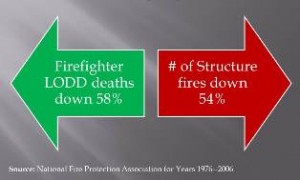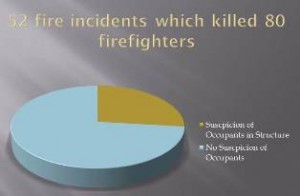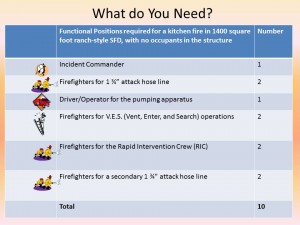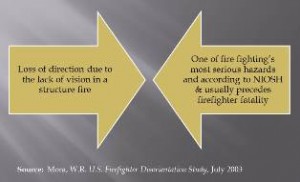By: Robert Avsec, Executive Fire Officer
Author’s Note: I originally had this piece written and ready to post before I taught a class at the Sissonville (WV) Fire Officers School on October 26 & 27. After teaching that class, and having several informal chats outside the classroom, I felt compelled to revise this post just “a bit”. For those who’ve read the original post, I’ll make it easy for you to check the revisions out–they’re in red print.
Firefighter safety must always be a priority for every fire chief and every member. Over the past three decades, the  fire service has applied new technology, better protective clothing and equipment, implemented modern standard operating procedures, and improved training. And over that time we’ve seen reductions in firefighter LODD deaths and fireground injuries.
fire service has applied new technology, better protective clothing and equipment, implemented modern standard operating procedures, and improved training. And over that time we’ve seen reductions in firefighter LODD deaths and fireground injuries.
So why are we seeing and hearing more about fire departments making interior fire attack with one or two people? This weekend I had two experienced (and thankfully alive) firefighters tell me that “going lone ranger” on a structure fire was something they’ve “had to do”…repeatedly. The spouse of one of those firefighters–a firefighter in her own right–said,
“It took me a long time to accept that he [her husband and father to their child] had to do that, that it was part of the job.”
“What in Sam Hill’s name is going on here?” (Colonel Potter)
Part of the job? As described by whom? Not NFPA, OSHA, or any of the other “alphabet organizations” that will be
part of the investigation and litigation that follows a firefighter line-of-duty death.
With a continued annual average of around 100 firefighter fatalities during the first decade of the new millennia, the question remains: have we really made a difference with all these technology improvements? Or, is there more that we can do to improve the safety culture of the American fire service?
Why are We Entering Burning Structures without Adequate Resources?

The Boston Globe newspaper, in 2005, reviewed NIOSH firefighter fatality reports of 52 fire incidents which killed 80 firefighters. The Globe found that in only 14 of these 52 incidents was there even a suspicion that any occupants were in the building upon arrival of fire companies.
For the 52 incidents of a firefighter LODD reviewed by The Globe, in only six of these incidents was it determined that an occupant(s) was in the building when fire companies arrived. There were no reported civilian fatalities.
This limited data implies that firefighters are losing their lives in buildings where no rescue of occupants is required. They died while trying to save a building – and no building is worth the life of a firefighter.
Rules of Engagement for Structural Firefighting
The Safety, Health and Survival Section of the IAFC of the International Association of Fire Chiefs (IAFC), believes that firefighters and officers need Rules of Engagement for Structural Firefighting, similar to those rules of engagement that have become a critical component of military and law enforcement operations.
The law enforcement and military communities long ago developed Rules of Engagement regarding the use of deadly force. These rules are described in short, specific terms which are easily taught and remembered. The rules define critical rapid assessments necessary to justify the use of deadly force. The rules have proven to be highly successful for both of these disciplines.
The Safety, Health and Survival Section believes that the Rules of Engagement can change the culture and safety behaviors of the American fire service. But that will only happen if we dedicate ourselves to learning, adopting, and constantly practicing those Rules of Engagement during every training exercise and emergency response.
Download the Rules of Engagement (which includes a teaching outline) in PDF format.
Download this copy of the Rules of Engagement Poster and display multiple copies prominently throughout your fire stations. Industries in our country have made extensive use of safety posters in their facilities for years because they’ve been found to be an effective strategy for maintaining employee awareness for general safety concepts and specific safety problems.
Firefighters and officers in 2013 need to know and follow the Rules of Engagement for Structural Firefighting.
Firefighter Disorientation
Firefighter Disorientation, which is loss of direction due to the lack of vision in a structure fire, is one of fire
fighting’s most serious hazards and according to the National Institute of Occupational Safety and Health (NIOSH), usually precedes a firefighter fatality.
In a study released in 2003, the U.S. Firefighter Disorientation Study, Captain William Mora of the San Antonio (TX) Fire Department, reviewed 23 firefighter fire ground deaths occurring over a 16-year period (1997–2001). The project broke out traumatic firefighter fatalities occurring in “open structures” and “enclosed structures”.
- Open structures were defined as smaller structures with an adequate number of windows and doors (within a short distance) to allow for prompt ventilation and emergency evacuation.
- Enclosed structures were defined as large buildings with inadequate windows or doors to allow prompt ventilation and emergency evacuation (“big box occupancies).
Mora’s research determined that 23 percent occurred when a fast and aggressive interior attack was made on an “opened structure”. When fast, aggressive interior attacks occurred in “enclosed structures” the fatality rate rose to 77 percent. Many of those deaths occurred in “marginal” or rapidly changing conditions in which the firefighter should not have been in the building.
In all these tragedies the only living human beings in the structures were firefighters. Firefighters were being killed trying to save buildings. Most were rebuilt.
Putting the “Science” into the Phrase “Fire Science”
This video shows results of fire research conducted by UL, the National Institute for Standards and Testing (NIST) and the Los Angeles County Fire Department to determine the effectiveness and safety of initial fire stream application for a structure fire from the exterior. You have to see the demo and the temperature readings to believe it. Share withe every firefighter and officer you know so that we stop getting firefighters killed and injured in fires where the fire “possesses” the building when we arrive. There is a better way, see it for yourself.
LAcoFD Exterior Water Application Training Video
[youtube=http://youtu.be/6lkM2AsZqlM]You viewed the video, right? Now I suggest you view it a second time and listen for these key concepts:
- The exercise results categorically “explode” our long-held belief that fire streams can “push” fire throughout the structure;
- The “hit it hard from the yard” or “softening the target” approach used in the exercise rapidly reduced the interior temperatures in the structure at the 7’, 4’ and 1’ levels thereby making interior conditions more tenable for potential victims and firefighters making subsequent entry into the structure;
- The proper exterior application of the fire stream “extinguishes the fire gases”, i.e., the primary life safety hazard to occupants and firefighters, and effectively “resets” the fire.
The are many incident factors that are working against firefighters from the moment the fire begins:
- The time from fire initiation, discovery of the fire, and calling for help;
- The response time for initial resources to arrive at the scene;
- The higher interior fuel loads of today’s buildings;
- Wide-spread increased in the use of petro-chemicals, synthetic materials for interior fixtures resulting in a much higher fuel load that produces 2-3 times the amount of heat when burned; and
- Light-weight building construction materials that resist gravity and keep the building standing, but are quickly susceptible to the degrading affects of fire.
These fire gases, in addition to being the primary life safety threat, are also the primary means for a fire to spread beyond the room of origin. The exterior application of water prior to personnel entering the structure enables one or two firefighters to initiate meaningful fire suppression through the application of a fire stream that extinguishes those fire gases. And that keeps a fire from reaching the flashover phase just as the first firefighter “breaks the plane” of the front door.
 Is your department consistently faced with an inadequate number of qualified and properly equipped firefighters arriving at the scene of a structure fire? Are your people launching an interior fire attack solo, or with only another member with them? (We know this is happening every day in the USA, don’t we).
Is your department consistently faced with an inadequate number of qualified and properly equipped firefighters arriving at the scene of a structure fire? Are your people launching an interior fire attack solo, or with only another member with them? (We know this is happening every day in the USA, don’t we).
 Fire & EMS Leader Pro The job of old firefighters is to teach young firefighters how to become old firefighters!
Fire & EMS Leader Pro The job of old firefighters is to teach young firefighters how to become old firefighters!

